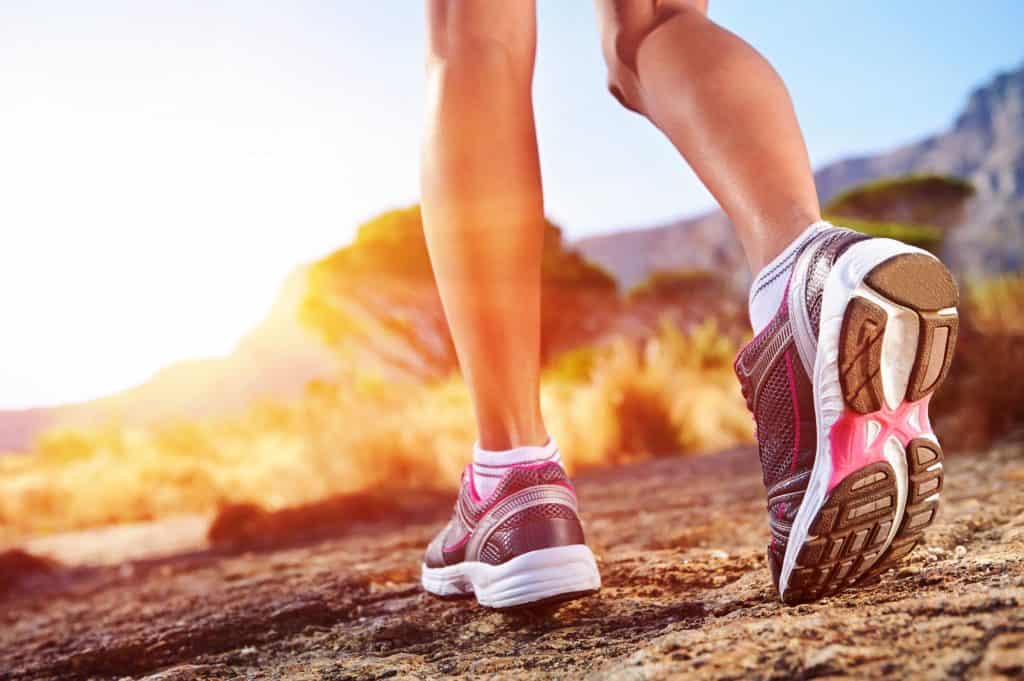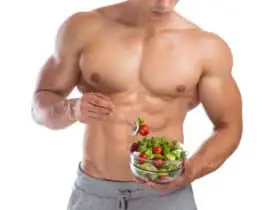Adopting a vegan diet can prove to have a lot of benefits regarding your overall health and wellbeing. However, you’d be missing out on a lot of these benefits if you don’t commit to pushing yourself a step further and lead an active life.
Fitness will give you benefits above and beyond just the perfect body shape. You’ll notice a significant improvement to your mood, have a better night’s sleep, and be more energized throughout the day to get work done.
Moreover, your active lifestyle complements your healthy vegan diet and protects you from many of the harms associated with a sedentary life, like obesity and diabetes. By now, you should be aware of how important exercise can be, and we will help you translate your will into action to live the life you dream of.
Activities for Better Fitness
On committing to a vegan lifestyle, your body is still bound by the same universal fitness rules. You don’t have to worry about any special considerations regarding the type of activities you can or can’t do, because being a vegan doesn’t impose any limitations on your fitness.
Since we established that you have the freedom to choose how to stay fit, we recommend you stick to an activity that you genuinely love. It would be much easier to pick an exercise that suits your daily schedule and keeps you motivated.
You don’t have to hit the gym to stay fit; there are many activities that you can incorporate in your daily routine to lead an active life. We will walk you through different activities and give you an idea about what to expect from every one of them.
Walking

Walking is the most natural activity for a beginner, as it doesn’t require special equipment or skills. Regardless of your age, previous activity level, or how busy your schedule is, you can find a way to start moving.
In order to establish a habit, it’s always helpful to set a destination. If you live within walking distance from your work, it would be easy to just exercise on your way to and from work. If not, you can get off the bus one stop earlier and walk the rest of the way home.
You can also walk to local shops in your area instead of driving. Those are just suggestions of how to add exercise to your existing schedule. Trying to build a whole new schedule from the scratch to fit your newly added workouts would prove hard, so taking small but steady steps towards your goal is always the way to go.
If you successfully established walking as a routine, you’d get a bunch of health benefits, including improved cardiovascular and lung functions, improved balance, and stronger bones. Walking can also help reduce your body’s cholesterol levels and, therefore, control hypertension and diabetes symptoms.
In order to start experiencing the health benefits associated with walking, it’s recommended to have 30 minutes of a brisk walk on most of the days of the week.
Jogging and Running
The main distinction between jogging and running is intensity. Running is more intensive and requires more effort from your heart, lungs, and lower body muscles. Nevertheless, both are considered weight-bearing activities, and they are steps ahead of walking in terms of calories burnt.
Running puts more stress on your bones and joints. The risk for injuries will be reduced significantly by wearing a pair of cushioned running shoes. There are a lot of vegan-friendly options on the market that are both stylish and affordable.
Moreover, running or jogging on dedicated tracks can prove to minimize injuries as well, thanks to the padded materials that are designed to absorb some of the force you exert on each stride. Also, you’re getting yourself away from the pollution and traffic of the city, which is always a plus.
Tip: If you have underlying cardiovascular disease, you have to consult your doctor or health care provider before committing to any kind of intensive training.
You have to keep in mind that walking, jogging, or running mostly targets your lower body’s muscles. So, in order to have a complete body exercise, you should add upper body exercise to your fitness routine, like push-ups, for example.
Swimming
Some regard swimming as the best form of exercise due to the fact that nearly all your body’s muscles are engaged during swimming. It’s also one of the few non-weight-bearing activities, so you don’t have to worry about the wear and tear your ankle, and knee joints are subjected to on intensive running sessions.
Needless to say how relaxing and meditative it Is, that’s why it’s considered as some sort of recreational activity for people of all ages. On practicing swimming, you will notice a significant boost to your physique and overall fitness.
Swimming builds endurance and tones your muscles. Similar to all other forms of exercise, it maintains a healthy heart and lungs.
Since swimming is a non-weight-bearing activity, you have to supplement your fitness routine by a form of resistance training for the long term health of your bones.
Chlorinated swimming pool water can present a host of problems for some people. Chlorine causes eye redness and stings, in addition to its harmful impact on hair.
Upon using goggles and swimming caps, you protect your eyes and hair from the harmful effects of chlorine. Or better, if you have access to open water areas like rivers, lakes or the sea, you are not subjected to the swimming pools’ chlorine at all. However, you need to practice caution while swimming there, as they are not as safe as confined pools.
Weight Lifting
Weight lifting can be casual or professional, depending on your goals. Beyond bulking and getting in shape, strength training boosts your overall fitness level.
Some people are discouraged by the idea of hitting the gym. Nevertheless, you can start weight lifting at home using a set of dumbbells. If you can only have limited equipment for your “home gym” setup, dumbbells should be on top of that list. They permit a wide range of motion and can be used in versatile workouts that target different muscle groups.
Special modifications to your diet should be put in place depending on your goal, whether it’s to put on muscle or lose extra fat. On bulking, you want to have a surplus of calories and protein-rich food, which is not always an easy task to achieve exclusively on plant-based meals. You can always supplement your protein and calorie intake through vegan protein powders.
On the other hand, when cutting body fat, a vegan lifestyle shines and helps you reach your goal faster. The all-natural, healthy diet primarily aims at reducing your calorie intake and keeping you away from harmful artificial fats and food additives.
Meal Planning
As we mentioned, meal planning can be a hassle for vegan bodybuilders. Other than that, if you want to lose weight, maintain a fit body, or stay healthy in general, a vegan diet is a no-brainer and will help you reach your goals without worrying too much.
In this section, we wanted to try something new. Instead of ranting about calories, micro, and macronutrients, we decided to give you a list of some of the most beneficial, healthy, disease-preventing whole foods that you can easily include in your vegan meals.
They are rich in antioxidants essential for the protection of our body cells against harmful products of metabolism. Moreover, they pack a diverse group of micronutrients that might be otherwise deficient in a vegan diet.
Spinach, cabbage and lettuce are just a few of the leafy greens that you can add to your meals, whether raw or cooked.
Beans and Legumes
Beans are ubiquitous among many of the different world’s cultures and for good reasons. They are a rich source for protein and pack many essential amino acids that are needed for building and repairing muscles, bones, skin, and other body tissues.
They are also an important source of folate, which is needed for the general well-being of the body and prevents the development of congenital abnormalities during pregnancy.
Legumes are well known for their beneficial effects in diabetics as they help stabilize the blood glucose levels. Studies have also shown that beans can prevent some cancers, thanks to their antioxidant and anti-inflammatory properties.
The list of health benefits goes on, which shows why you should always consider legumes as an integral part of your vegan diet.
Fruits
Fruits are an excellent source of many crucial minerals and vitamins. They are also rich in fibers, which are necessary for a healthy digestive tract.
Tip: Keep in mind that the more colors you include in your diet, the better. So, it’s always recommended to add a diverse group of fruits to your meals. This way, you make sure that your body gets the different minerals and vitamins it needs.
In addition to their vast array of benefits, they can be extremely versatile and easy to add as part of your vegan diet. You can have fruits as snacks between meals, add them to your oatmeal or make a smoothie. The possibilities are endless!
Nuts
Nuts are an excellent source for essential oils and fatty acids. For example, walnuts and flaxseeds, in particular, are rich in omega-3 fatty acids, which are necessary to maintain a healthy heart and blood vessels.
Omega-3 fatty acids prevent the accumulation of harmful cholesterol in blood vessels, reduce the risk of developing heart attacks and strokes, and decrease the chance of sudden cardiac death in patients with pre-existing heart diseases. These fatty acids can be easily deficient on a conventional vegan meal; that’s why you have to actively make sure that they are part of your diet.
Benefits of a Vegan Diet
To sum up, we made you a list of all the benefits vegan diet offers. The exact reasons for some of these benefits might not be fully understood. However, the vegan lifestyle has piqued the attention of scientists, and further research can help us better understand the health benefits associated with plant-based diets.
Without further ado, here are some of the benefits of eating vegan:
- Protection against heart diseases
- Improvement of hypertension and diabetes symptoms
- Reduction of joint pains
- Protection against certain types of cancers
- Promotion of weight loss and a healthy lifestyle
In Conclusion
You’d be missing out on the full potential of a vegan lifestyle if you just stick to the diet without doing something about your sedentary routine. Stop looking for excuses that keep you from exercising, as hitting your fitness goal can go hand in hand with your daily schedule if you pick the type of activity that suits you best and dedicate the right time of the day for it.
The vegan lifestyle should empower us to seek healthy habits regarding all the aspects of our life. It’s all about the attitude! If you stop looking at fitness as something you have to do and see it as something you get to do, you’d be much happier and healthier.









Leave a Reply